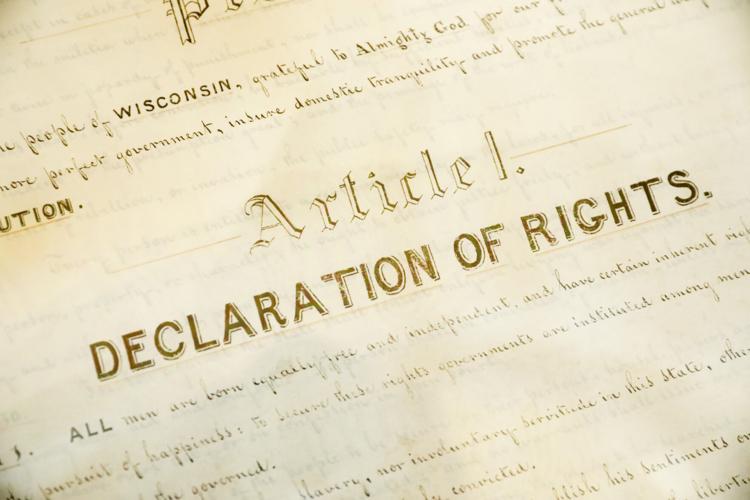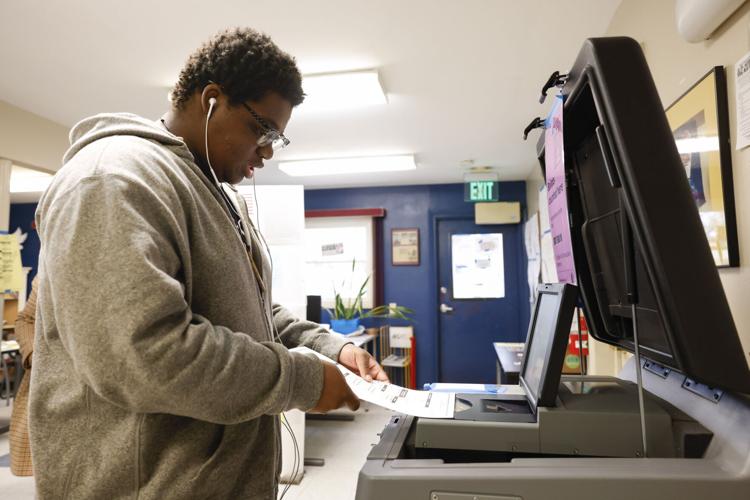State Rep. Jerry O’Connor says he’s always wondered why the constitutional amendments he’s voting on were written in inscrutable legalese.
“I shouldn't have to struggle through this blasted thing,” O’Connor, a Fond du Lac Republican and retired banker, recalls thinking when he has received his ballot in the past.
On the Democratic side, Rep. Deb Andraca of Whitefish Bay agrees. A former elementary school teacher, Andraca knows how to target texts to the appropriate reading level.
“It strikes me that if we can do that in third grade, we certainly should be able to do it on our ballot,” she said.
O’Connor and a group of Republican legislators have introduced a bill to give voters more information about the Wisconsin constitutional amendments they’re considering. Andraca and a group of Democratic legislators have introduced a similar bill requiring that the amendment descriptions be written in plain English.
Changes to the state’s founding document are no small thing. Because it can take two years or more to amend the Constitution, amendments are hard to undo. And they have been used to try to make changes on key issues, such as election administration, criminal justice and the powers given to the executive and legislative branches.
Voters just approved another ballot initiative on April 1 that places the state’s voter ID law in the Wisconsin Constitution. And there will likely be more. Republican legislators have turned to constitutional changes as a strategy for settling conflicts with Democratic Gov. Tony Evers.
But there is no requirement that the amendment language is clear.
Can giving voters more information become a rare area of bipartisan agreement?
“This is a nonpartisan issue,” O’Connor said. “The public should have the right to be provided with understandable language.”
Constitutional amendments more prevalent
Between 2023 and 2025, voters have been asked to weigh in on eight proposed amendments to the Wisconsin Constitution. That is the most in any three-year period since the 1980s.
In 2023, that meant amendments on stiffening bail and pre-trial release for alleged criminals. A year later, voters agreed to ban private groups from helping to fund or otherwise support election administration and approved a measure clarifying that non-citizens cannot vote in local elections.

Voters in April approved a constitutional amendment on voter ID, the latest in a string of proposed amendments presented to Wisconsinites.
Prior to the election, notices must be posted about a pending constitutional amendment.
The Legislature’s nonpartisan attorneys prepare a brief statement describing the proposed amendment. State statute requires it to be “worded such that an affirmative vote will be in favor of the measure and a negative vote will vote against it.”
But in some cases, the language used in that statement can be complex.
In August, voters rejected amendments to limit Evers’ ability to spend money from the federal government. The description that appeared before voters, however, was written at a level appropriate for post-graduate students. That’s despite U.S. Census data showing only 11% of Wisconsinites have a graduate or professional degree.
“I think voter knowledge about constitutional amendments varies really widely,” said Bryna Godar, a staff attorney with the State Democracy Research Initiative at the University of Wisconsin Law School.
“There are a lot of people who research the amendment before Election Day, know a lot about it and know how they're going to vote going in. And there are a lot of people who show up to the polling place on Election Day and don't know that there's a constitutional amendment on the ballot until they arrive. And plenty of people fall somewhere on the spectrum in between.”
Oregon, California and Idaho are among states that make pamphlets available to voters that give detailed information on ballot questions, arguments from proponents and critics of the policy and, in some cases, information on the proposal’s fiscal impact.
“There are definitely pros and cons,” Godar said. “There is the potential for voters to be overwhelmed by information as well. But you know, California definitely errs on the side of giving a lot more information. Wisconsin errs on the side of a lot less information.”
Legislators want to help Wisconsin voters
The two Wisconsin lawmakers have ideas about making the state’s constitutional amendments more accessible, though their proposals would look different in practice.
Andraca and her Democratic colleagues want to require that the summary printed on ballots is written in plain language. Their bill also would mandate that voters be informed whether a proposed constitutional amendment is already in state law, which would have applied to the voter ID measure.
O’Connor and a group of Republicans want to require the state to publish a notice about any referendums set to appear on the ballot.
The notice would include a brief summary of the amendment proposal and then an explanation of what a “yes” and “no” vote would signify. The notice would be available on Wisconsin’s online voter registration portal and would be posted in local clerks’ offices and other locations.
Andraca said she thinks the Republican-authored proposal “makes sense” but found it curious the idea was proposed shortly after her bill was released.
O’Connor said he has been working on his version since last year but noted he planned to have a conversation with Democrats and was open to any changes.
“What's important is that the public can understand what it is you're proposing, so they have the ability to make an informed decision,” he said.
In the meantime, the Legislature’s embrace of constitutional amendments shows no signs of slowing down, amid deadlocks between legislative Republicans and Evers.
Three constitutional amendments passed by Republican lawmakers last session are set to be considered again this year, a requirement to be placed on the ballot in 2026.
Voters who can’t get their information from the state might look elsewhere, including to more partisan sources, Godar said.
“Not to say every constitutional amendment over time has been partisan, but in recent years, that's what we've seen,” she said. “So I think in that way, partisan influence is heightened. And then I do think it's an open question of whether this leads to better or worse information, but not having as much information that is provided by the state definitely opens the door to that information coming from outside groups.”








